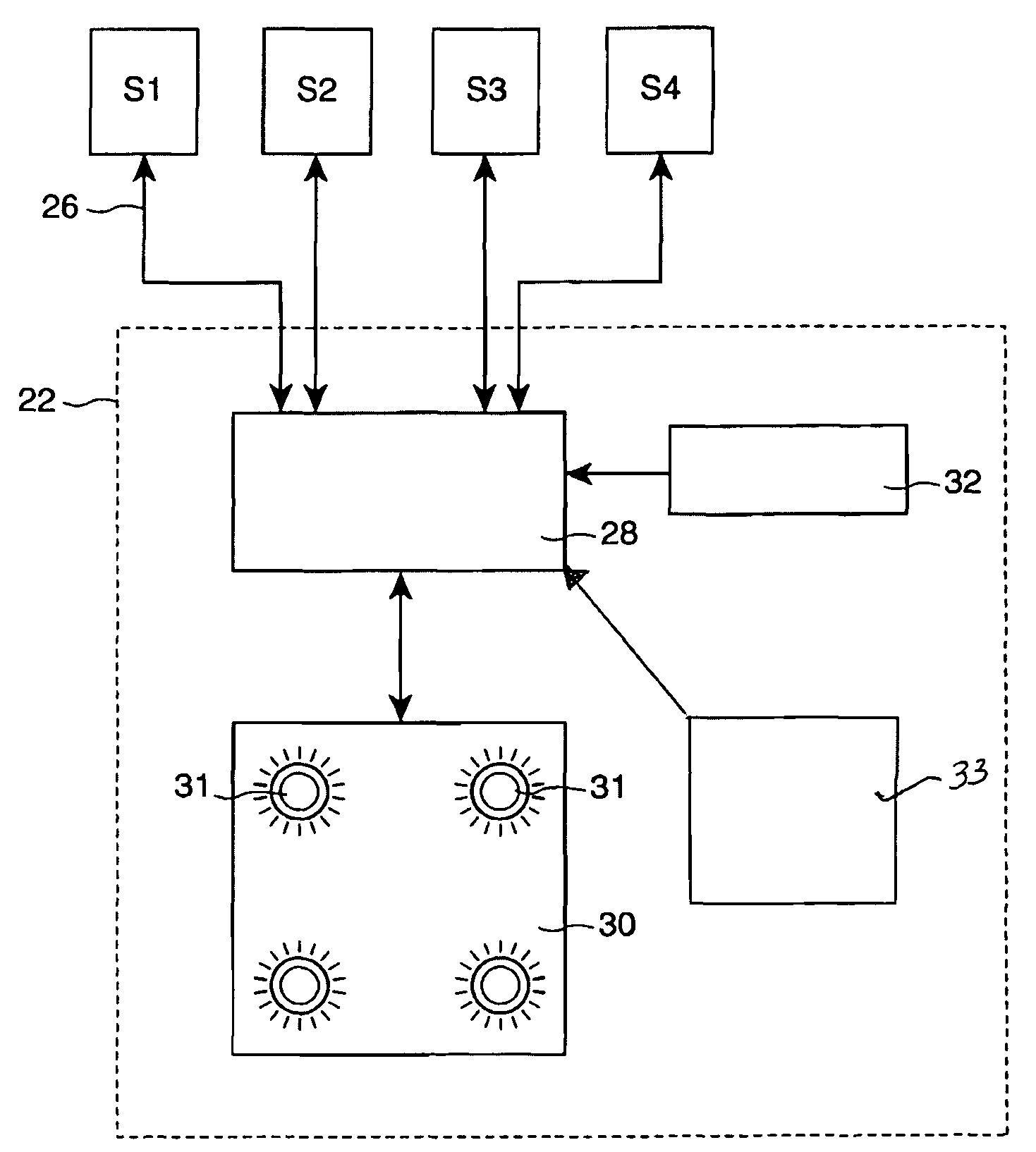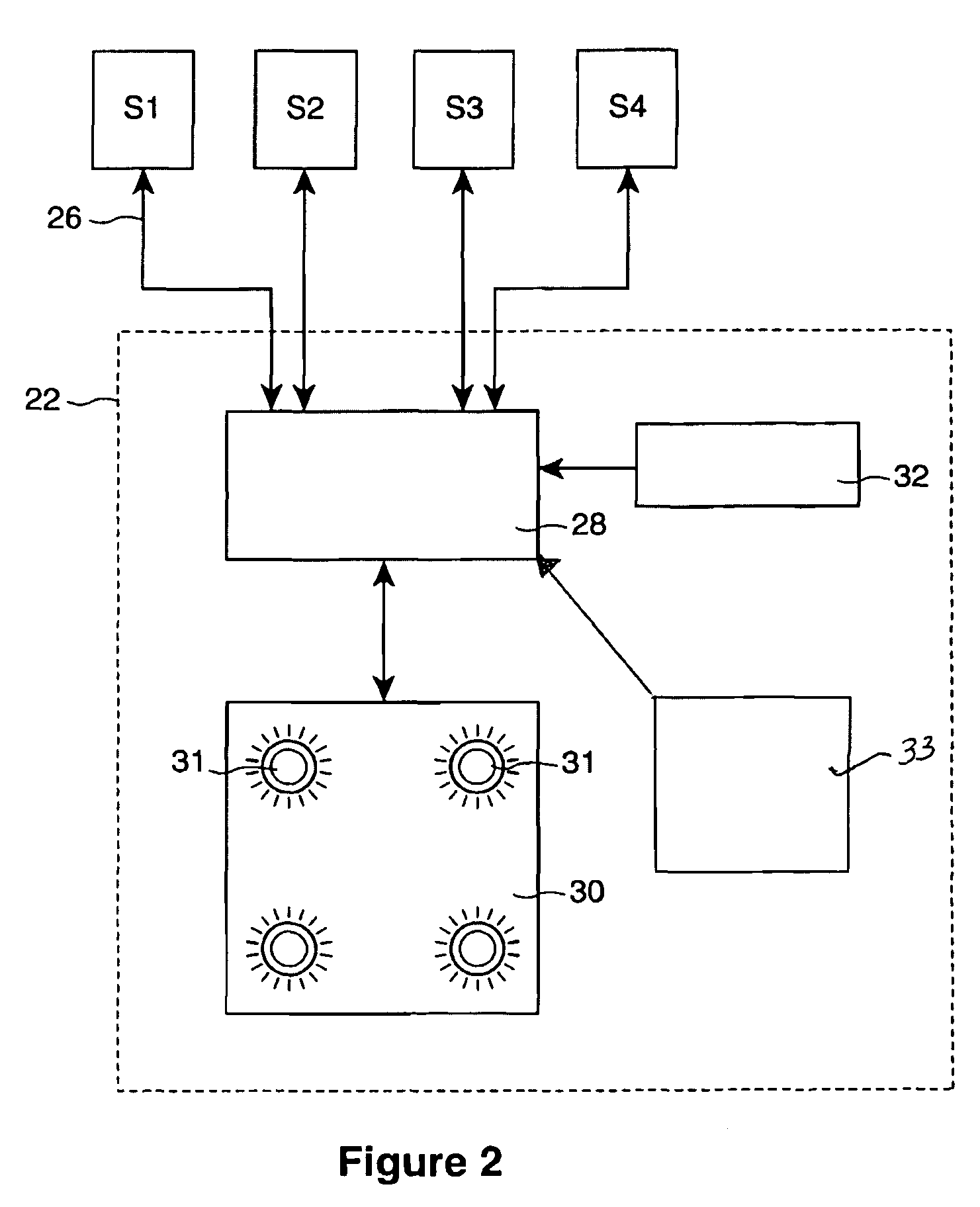Detecting device and method of using same
- Summary
- Abstract
- Description
- Claims
- Application Information
AI Technical Summary
Benefits of technology
Problems solved by technology
Method used
Image
Examples
Embodiment Construction
[0037]FIG. 1 shows a schematic view of the detecting device of the present invention being used in a representative driving environment on a road 10. The detecting device is shown installed in a host vehicle 12 being driven by a driver (not shown) in a center lane 14 of a 3-lane highway having a left lane 16 and a right lane 18. There is a target vehicle 20 in the left lane 16, and the right lane 18 is empty. In this specification the terms “moving” and “stationary” mean relative to a fixed point, such as a road surface. Thus, a moving host vehicle means a vehicle moving along a road surface, for example. A moving target vehicle means a vehicle moving along a road surface for example, and which may be moving faster, slower, or at the same speed as the host vehicle. Stationary means a fixed point, thus a stationary target area means a specific fixed location, for example, on a roadway.
[0038]The detecting device comprises a control system or controller 22 and four detector means or de...
PUM
 Login to View More
Login to View More Abstract
Description
Claims
Application Information
 Login to View More
Login to View More - R&D
- Intellectual Property
- Life Sciences
- Materials
- Tech Scout
- Unparalleled Data Quality
- Higher Quality Content
- 60% Fewer Hallucinations
Browse by: Latest US Patents, China's latest patents, Technical Efficacy Thesaurus, Application Domain, Technology Topic, Popular Technical Reports.
© 2025 PatSnap. All rights reserved.Legal|Privacy policy|Modern Slavery Act Transparency Statement|Sitemap|About US| Contact US: help@patsnap.com



